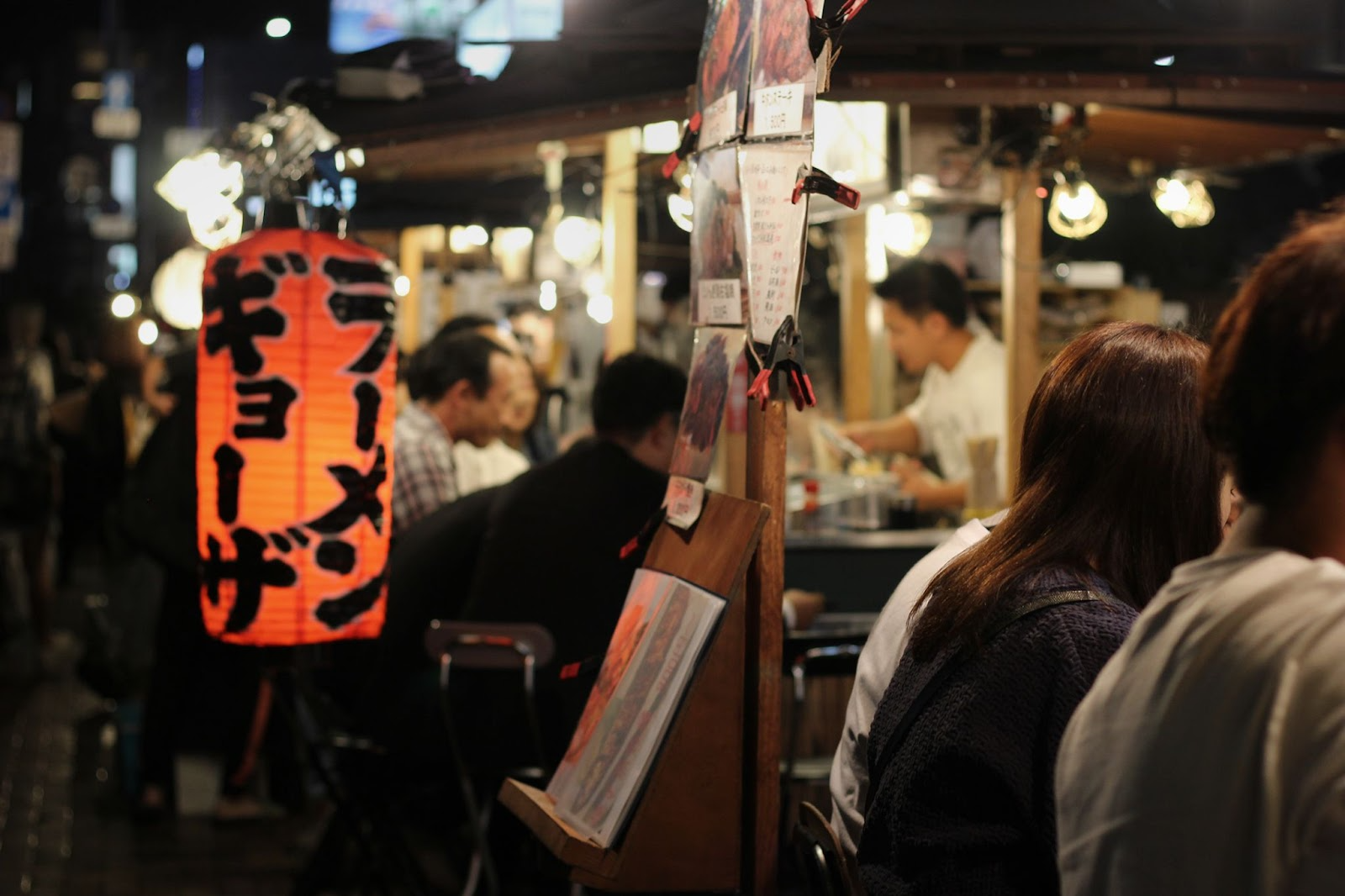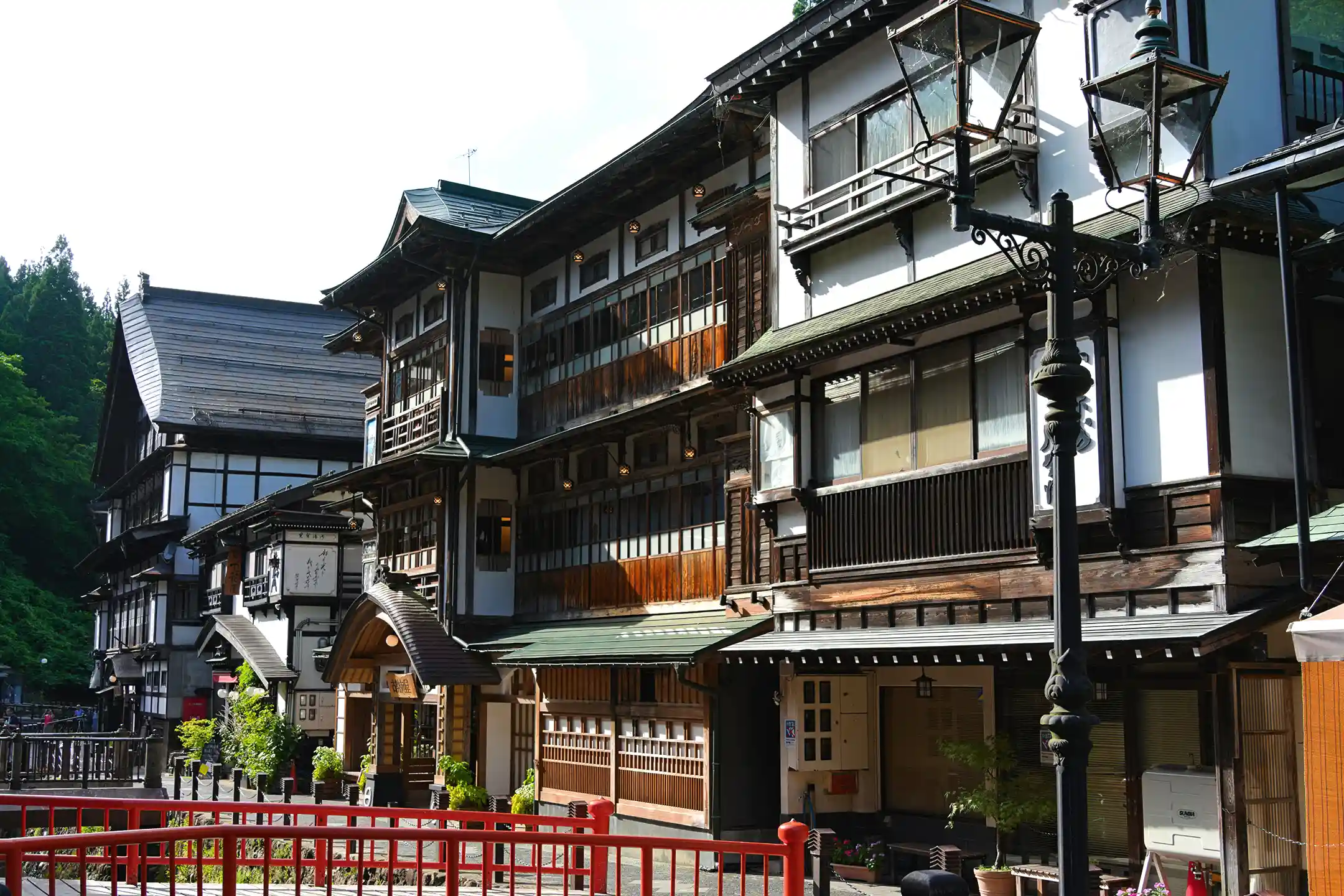A Sophisticated Journey Through Fukuoka’s Specialties: Culture, History, and Gastronomy
Located in Kyushu, Fukuoka is a captivating city where rich history, refined culture, and a diverse food scene come together. Since ancient times, it has flourished as a hub for exchanges with Asia, nurturing unique traditions while earning its reputation as a “treasure trove of food.” Travelers are inevitably drawn to its charms. In this article, you’ll explore Fukuoka’s famous sights and signature dishes, while uncovering the deeper cultural and historical layers that make your journey here truly sophisticated.
Must-Know Spots and Specialties Before Visiting Fukuoka
From early on, Fukuoka developed as Kyushu’s central city and “gateway to Asia,” shaping a cosmopolitan history and culture. Its fertile natural environment and mild climate provide abundant seafood from the Genkai Sea and fresh local produce, making it worthy of its title as a culinary capital. Before you go, let’s look at some of the must-see landmarks and specialties that define Fukuoka.
Dazaifu Tenmangu Shrine
Dazaifu Tenmangu, dedicated to the deity of learning Sugawara no Michizane, is the head shrine of all Tenmangu shrines across Japan. Attracting around 10 million visitors annually, it is one of Kyushu’s top destinations. The grounds are also celebrated for plum blossoms, with vibrant blooms drawing crowds every February and March. Historically, this area housed the government office of Dazaifu in the Nara and Heian periods, making it a place where you can feel Japan’s ancient exchanges with the continent.

Hakata Cuisine and Yatai Stalls
Fukuoka City (formerly Hakata) is widely known as a “food city.” Hakata ramen, with its signature pork bone broth, is loved nationwide. Local hotpot dishes such as motsunabe (offal stew) and mizutaki (chicken hotpot) are beloved staples. The city is also famed for mentaiko (spicy cod roe), produced and consumed here more than anywhere else in Japan, earning it the nickname “land of mentaiko.” Countless snacks and souvenirs—from Hakata Torimon to Tsurunoko—also feature mentaiko.
Adding to the appeal, Fukuoka’s yatai (street food stalls) light up the city’s nights with more stalls than anywhere else in Japan. In fact, it is the only Japanese city chosen as one of the “Top 10 Asian Street Food Cities.” From ramen and yakitori to gyoza, you can sample Hakata’s flavors in a lively, casual atmosphere at affordable prices. Locals, too, unwind at these stalls after work, making their vibrant streets an experience you shouldn’t miss.
Fukuoka’s Culture and Historical Background
Fukuoka’s culture has been shaped by its geography as a coastal city close to the Asian continent, enriched by centuries of trade and cultural exchange. Let’s unravel how its history forged its international character, along with the traditions and crafts that still thrive today.
Historical Development and International Influence
Since ancient times, the Hakata area has been a key center of diplomacy and trade. The discovery of the gold seal inscribed “King of Na of Wa, vassal of Han” on Shikanoshima in 57 CE proves early ties with China.
In the 8th and 9th centuries, envoys to China and Korea departed from Hakata Port, while the Kōrokan guesthouse was established near present-day Fukuoka Castle to host foreign envoys. During the late Heian to Kamakura periods, Hakata flourished as Japan’s hub for trade with the Song dynasty. A Chinese settlement even formed here, bringing strong cultural influences.
In the 12th century, under the rule of Taira no Kiyomori, trade with Song China reached its peak. Zen monk Shōichi Kokushi returned from China, introducing tea, manju buns, and udon-making techniques to Japan. Though the Mongol invasions devastated Hakata in the 13th century, trade soon revived, with Hakata becoming a bustling hub for Ming trade during the Muromachi era.
Later, Toyotomi Hideyoshi rebuilt Hakata as a commercial hub after wartime destruction. During the Edo period, even under Japan’s closed-door policy, Hakata remained a vital domestic trade port, supplying specialty goods such as Hakata-ori textiles to the shogunate.
From the Meiji era onward, Hakata Port reopened as an international harbor, further expanding exchange with Asia after World War II. Today, with Fukuoka Airport just five minutes from the city center by subway, the city continues to thrive as a gateway for international travelers.
From ancient times to today, Fukuoka has always been at the frontline of global exchange, and this history still echoes through its culture and traditions.
.webp?width=750&height=500&name=The%20cityscape%20surrounding%20Hakata%20Bay%20(from%20above%20Fukuoka%20City).webp)
Traditional Festivals and Seasonal Celebrations
Hakata is alive with festivals that have been passed down for centuries, brimming with energy and local pride. Two of its most iconic events are the Hakata Gion Yamakasa and the Hakata Dontaku festivals—both with histories stretching back 700–800 years, making them inseparable from Fukuoka’s cultural identity.

Hakata Gion Yamakasa
Coloring Fukuoka’s summers, the Hakata Gion Yamakasa is a powerful festival designated as an Important Intangible Folk Cultural Asset of Japan. Its origins are traced back to 1241, when Zen monk Shōichi Kokushi, founder of Jōten-ji Temple, was carried through the streets sprinkling water in prayer to ward off plague.
Since then, the festival has been held annually from July 1 to 15 for over 770 years. During this period, the city is adorned with magnificent decorated floats. The climax comes at 4:59 a.m. on the final day, when loincloth-clad men shout “Oisa!” as they carry massive one-ton kakiyama floats and race through the streets of Hakata. This thrilling spectacle draws nearly two million spectators each year. Dedicated to Kushida Shrine, the event symbolizes the spirit, unity, and pride of Hakata’s men.
Hakata Dontaku
In contrast, Hakata Dontaku takes place during Golden Week, on May 3–4, as the “Hakata Dontaku Port Festival.” With over two million attendees, it boasts the largest crowd of any Golden Week celebration in Japan. Its roots stretch back to Heian-period New Year’s festivities known as Hakata Matsubayashi, giving it more than 840 years of history. In the Meiji era, it came to be affectionately called “Dontaku,” derived from the Dutch word zondag (Sunday, holiday).
The festival is famous for its parades: citizens don costumes or traditional attire, clanging wooden rice scoops (shamoji) as they march through the streets. Tens of thousands of performers take part, and the entire city transforms into a stage of music, dance, and joy. Unlike the solemn Yamakasa, Dontaku radiates an open, festive atmosphere, letting you feel Hakata’s vibrant communal spirit.
Though held in different seasons, both festivals embody the passion of Hakata’s people, continuing to energize the community year after year.
Performing Arts and Traditional Crafts
Fukuoka is also home to time-honored crafts and folk arts, many of which blossomed through its history of exchange and cultural accumulation. Among the most celebrated are Hakata-ori textiles and Hakata dolls, both originating here and widely recognized across Japan.
Hakata-ori
Hakata-ori is a silk textile characterized by its firm, resilient fabric. The craft traces back to 1241, when weaving techniques were brought from Song-dynasty China. By the Edo period, Hakata-ori had become a prestigious gift to the shogunate. Its intricate striped patterns and refined designs showcase high-level craftsmanship, making it a prized material for kimono sashes (obi) and sumo wrestlers’ belts. Its dignified elegance and durability have earned it the nickname “sincerity woven into Hakata.”
Hakata Dolls
The craft of Hakata dolls began in the early 17th century, when tile makers involved in constructing Fukuoka Castle started creating unglazed clay figurines. Over time, local artisans refined the craft into highly detailed and graceful works of art. By the Meiji era, these dolls were distributed nationwide, and in 1900 they gained international acclaim at the Paris Exposition for their intricate coloring and expressive features.
The delicate shading of the kimono and the lifelike expressions painted on each face showcase the artisans’ mastery. The gentle smiles of Hakata dolls carry a warmth that soothes the heart, making them beloved souvenirs for international travelers who wish to connect with Japan’s artistic spirit.
Beyond these, Fukuoka Prefecture nurtures many other traditional crafts, such as Kurume kasuri (ikat fabric), Koishiwara pottery, and Yame lanterns and Buddhist altars. Folk performing arts like Hakata Niwaka—improvised comedic plays in Hakata dialect—also continue to thrive, preserving humor and wit unique to the region.
By experiencing these crafts and performances firsthand, you gain a deeper sense of Fukuoka’s artistry, history, and cosmopolitan heritage—traditions still vibrantly alive today.

Fukuoka’s Iconic Foods: From Tonkotsu Ramen to Local Hotpots

Hakata’s tonkotsu ramen is perhaps Fukuoka’s most iconic dish. Its defining features are the creamy pork-bone broth, simmered for hours at high heat, and the ultra-thin straight noodles. Rich in collagen yet surprisingly mild in salt, the soup is flavorful without being overwhelming—making it easy to drink down to the last drop, even for international visitors.
Originating in Hakata, the system of serving smaller noodle portions (to be finished before they soften) and offering kaedama (noodle refills) reflects the city’s fast-paced working culture. With over 1,000 ramen shops across Fukuoka Prefecture, every establishment—from historic icons to new innovators—adds its own twist.
Chains like Ichiran and Ippudo, born in Fukuoka, now attract long lines in New York, Paris, and beyond, spreading the taste of Hakata abroad. In Fukuoka itself, you can request your preferred noodle firmness—kata (slightly firm) or harigane (very firm)—and customize with pickled ginger, sesame, or spicy mustard greens.
Another local specialty is mentaiko (spicy cod roe). Its roots trace back to Korean salted pollack roe, which Toshio Kawahara, founder of Fukuya in Fukuoka, adapted to Japanese tastes after World War II. With competition among producers, the product evolved in quality and popularity, gaining nationwide fame with the opening of the Shinkansen line to Hakata in 1975. Today, Fukuoka remains Japan’s leading producer and consumer, earning its nickname as the “land of mentaiko.”
Mentaiko’s spicy, popping texture makes it versatile: from pasta sauces to bread fillings, rice crackers, and izakaya snacks like grilled mentaiko. Museums like “Hakata Hakuhaku” even let you learn its history and make your own customized “My Mentaiko.”
Fukuoka’s hotpot culture is equally essential. Motsunabe—made with beef or pork offal, cabbage, garlic, and chives—is a postwar dish that evolved into a beloved comfort food. The rich broth, often flavored with soy sauce or miso, is addictive and packed with collagen, making it especially popular among women for its beauty benefits.
Meanwhile, mizutaki, a chicken hotpot born in Fukuoka, simmers chicken bones and meat from cold water to create a rich yet clean broth. Diners savor the broth first with just salt, then enjoy the chicken and vegetables with ponzu or yuzu pepper, and finish with rice porridge. It has long been considered a “drinkable beauty serum” for its nourishing collagen.
In recent years, innovative chefs in Fukuoka have gained international attention for fusion cuisine that combines local ingredients with global techniques. Restaurants like La Maison de la Nature Goh, awarded a Michelin star and listed among Asia’s 50 Best Restaurants, reinterpret Kyushu’s seafood, vegetables, and beef through French techniques infused with Japanese sensibility. Across the city, young chefs are opening creative establishments that honor local ingredients while exploring bold combinations.

Experiences to Satisfy Your Curiosity
Fukuoka offers countless opportunities for cultural immersion. At the “Hakata Machiya Furusato-kan,” you can try painting your own Hakata doll under the guidance of master artisans—a unique keepsake to take home. You can also tour weaving workshops to see Hakata-ori textiles being produced, even trying your hand at weaving.
Guided tours by local historians bring sites like Fukuoka Castle Ruins to life, while walking tours in Hakata’s old town reveal fascinating stories behind shrines and festivals. Museums frequently host gallery talks by curators, often free and open to drop-in visitors.
For travelers eager to learn, public lectures at universities and cultural centers cover Fukuoka’s history and arts, while exchange events hosted by local foundations invite you to connect with residents and international students. Such programs let you go beyond sightseeing, engaging directly with the living traditions of the city.
For Culture Lovers: Sophisticated Hotels and Fine Dining in Fukuoka
Luxury Hotels
Fukuoka City offers refined hotels where every detail of the interior and amenities has been thoughtfully curated. The Ritz-Carlton Fukuoka, for example, incorporates design inspired by Hakata-ori textiles, combining traditional elegance with modern sophistication.
Other unique stays include Hotel Cultia Dazaifu, located by Dazaifu Tenmangu Shrine. Housed in a restored Edo-period building, it offers cultural programs such as guided shrine tours led by Shinto priests. These experiences turn your stay itself into a journey of learning and reflection.
Michelin-Starred Dining
Fukuoka is also a global dining destination. In the Michelin Guide Fukuoka edition, sushi restaurants like Sushi Gyoten and Sushi Sakai earned the highest three-star rating. Ten more two-star restaurants, including Goryori Furukawa, showcase the excellence of local Japanese cuisine. Many focus on chisan-chisho—local production for local consumption—using fresh seafood from the Genkai Sea and seasonal vegetables from Chikugo.
Even local specialties like motsunabe have earned recognition: Motsu Shige was featured in the guide, showing how Fukuoka’s dining scene values tradition as much as innovation.
Cafes and Bars
If you’re seeking a quiet evening, Fukuoka has plenty of intimate cafes and bars. Spots like cafe&bar EGOTO offer candlelit interiors and a serene atmosphere, while the Nishinakasu district is renowned for its refined bars serving curated whiskies and sake.
Art lovers can enjoy cafes doubling as galleries, such as TAGSTÅ in Haruyoshi or bound near Tenjin, where rotating exhibitions complement coffee or cocktails. Each space provides a refined atmosphere to reflect, converse, and feel the city’s creative pulse.

Conclusion: Steps Toward Your Next Journey
Fukuoka is a cultural city where tradition and innovation coexist beautifully. From ancient times as Japan’s “gateway to Asia,” it has embraced diverse influences while fostering its own distinctive identity. Vibrant festivals like Hakata Gion Yamakasa and Hakata Dontaku continue to embody its spirit, while crafts like Hakata-ori and Hakata dolls preserve timeless artistry.
Food—whether ramen, mentaiko, or hotpots—reflects both the richness of the land and the creativity of its people. At the same time, world-class dining and luxury hotels invite you to experience Fukuoka in modern sophistication.
When you visit, you’ll discover not just a sightseeing spot, but a place where history, culture, and cuisine converge to spark your curiosity and leave lasting memories. Fukuoka promises a journey that will resonate deeply, long after you return home.
Author Bio






